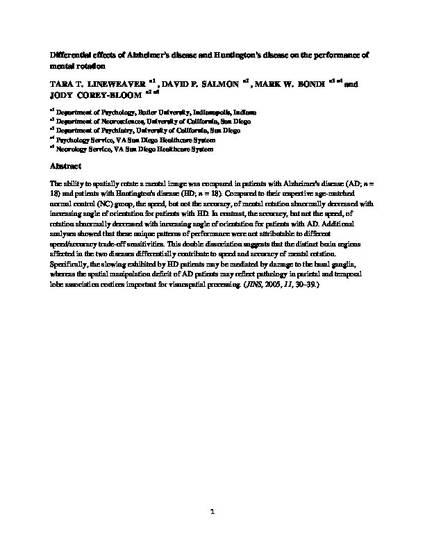
he ability to spatially rotate a mental image was compared in patients with Alzheimer's disease (AD; n = 18) and patients with Huntington's disease (HD; n = 18). Compared to their respective age-matched normal control (NC) group, the speed, but not the accuracy, of mental rotation abnormally decreased with increasing angle of orientation for patients with HD. In contrast, the accuracy, but not the speed, of rotation abnormally decreased with increasing angle of orientation for patients with AD. Additional analyses showed that these unique patterns of performance were not attributable to different speed/accuracy trade-off sensitivities. This double dissociation suggests that the distinct brain regions affected in the two diseases differentially contribute to speed and accuracy of mental rotation. Specifically, the slowing exhibited by HD patients may be mediated by damage to the basal ganglia, whereas the spatial manipulation deficit of AD patients may reflect pathology in parietal and temporal lobe association cortices important for visuospatial processing. (JINS, 2005, 11, 30–39.)
This is a post-print version of an article originally published in Journal of the International Neuropsychological Society, 2005, Volume 11, Issue 1. Version of record is avaialable through The International Neuropsychological Society.
